
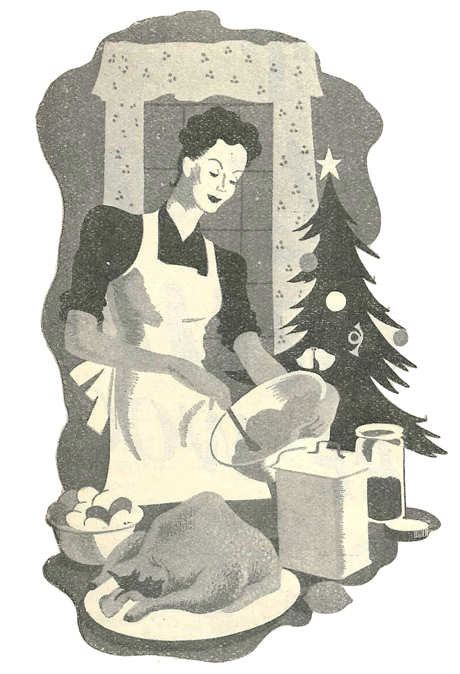 Fancy an olive stuffed with anchovies and capers, placed inside a prune and wrapped with bacon this Christmas? No? If our archives are anything to go by, you might well have in 1938. For those with more adventurous tastes, the recipe Bonnes Bouchees Aux Pruneaux (from 7 December 1938) goes like this: ‘Stone some olives, put a fillet of anchovy into each with a caper in the middle. Lay each prepared olive in the centre of a stoned prune, wrap all in pieces of bacon and tie with cotton. Cook in a quick oven for ten minutes. Remove the cotton and serve on pieces of hot buttered toast, which have had a few drops of anchovy essence sprinkled upon them.’
Fancy an olive stuffed with anchovies and capers, placed inside a prune and wrapped with bacon this Christmas? No? If our archives are anything to go by, you might well have in 1938. For those with more adventurous tastes, the recipe Bonnes Bouchees Aux Pruneaux (from 7 December 1938) goes like this: ‘Stone some olives, put a fillet of anchovy into each with a caper in the middle. Lay each prepared olive in the centre of a stoned prune, wrap all in pieces of bacon and tie with cotton. Cook in a quick oven for ten minutes. Remove the cotton and serve on pieces of hot buttered toast, which have had a few drops of anchovy essence sprinkled upon them.’
The same article, by Doris B Sheridan, author of The Nursery Cookery Book, pronounced some very definite opinions of the correct procedures for Christmas cooking. ‘Either cranberry or bread sauce should accompany the turkey’. ‘Mince pies are made on Christmas Eve or the day itself’, and on the matter of the Christmas pudding: ‘This will, of course, have been made and had its preliminary cooking some time before Christmas so that on the day itself only final cooking will be necessary. Place a sprig of holly in its top and, to please the children, send it alight to table. A little warmed brandy or rum poured round the warmed dish and set on fire just outside the dining-room door should give a flame that is at its best when the pudding reaches table. The spirit should be poured round the dish and not on top of the pudding, then thoroughly assimilated. Brush with beaten egg 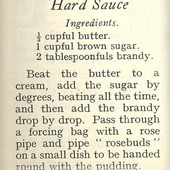 or milk after shaping the pies and before putting them into the oven, then the children’s helpings can be taken from the top part that is untouched by the spirit.’
or milk after shaping the pies and before putting them into the oven, then the children’s helpings can be taken from the top part that is untouched by the spirit.’
Wartime Christmas spreads show that while in 1942 butter was still available in small quantities, ‘Emergency Cream’ (see overleaf) has to take the place of the real thing, and ‘household milk’ – Government-issued powdered milk, brought in after rationing of fresh milk from November 1941, makes an appearance.
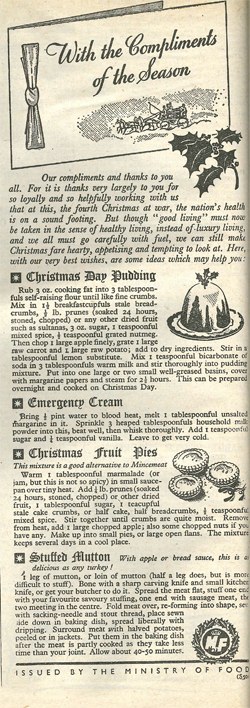 By the latter stages of the war though, the scarcity of key ingredients really becomes apparent. For those with a very sweet tooth, a 1942 recipe for ‘Hard Sauce’ , otherwise known as brandy butter, consists of 1/3 cupful butter, 1 cupful brown sugar, 2 tablespoonfuls brandy. By 1944, shortages mean butter has to be replaced with 2oz margarine, along with 2oz white sugar, nuts and ‘rum flavouring’ and if that could not be found, almond or vanilla essence.
By the latter stages of the war though, the scarcity of key ingredients really becomes apparent. For those with a very sweet tooth, a 1942 recipe for ‘Hard Sauce’ , otherwise known as brandy butter, consists of 1/3 cupful butter, 1 cupful brown sugar, 2 tablespoonfuls brandy. By 1944, shortages mean butter has to be replaced with 2oz margarine, along with 2oz white sugar, nuts and ‘rum flavouring’ and if that could not be found, almond or vanilla essence.
Of course, Christmas isn’t just about food: there is also the matter of presents. Here is a post-war account from 10 February 1955, by seven-year-old Andrea Mawson.
‘I woke early; it was Christmas day at last. I jumped out of bed… After breakfast we opened our presents. I got two books: their names are Pigeon Post and Heidi. A few weeks later we went to the big fancy dress ball because it was twelfth night. I wore my new full-skirted party frock with a tarlatan petticoat, Mummy made me some pantalettes, and a poke bonnet out of my panama, and I went as a Victorian child. Gerald went as an Arab and Robert went as a gardener. Robert went in his ordinary clothes with a gardening apron and an old straw hat. Gerald wore blankets and tea towels. A few days after that it started snowing. We played snowballs in the snow. Previously I forgot to mention a dolly I got for Christmas – I call it Daisy Bell. This is how I got the dolly. We were all reading our books when suddenly there was a knock on the door and in came our next-door neighbour in a Father Christmas mask and a red dressing-gown. Mummy got a bag and a diary. My two brothers got a box of Plasticine and a book called The Piets and the Martyrs and I got Daisy… At tea-time we were visited by the aunties who brought us presents. We did have a full enjoyable Christmas.’
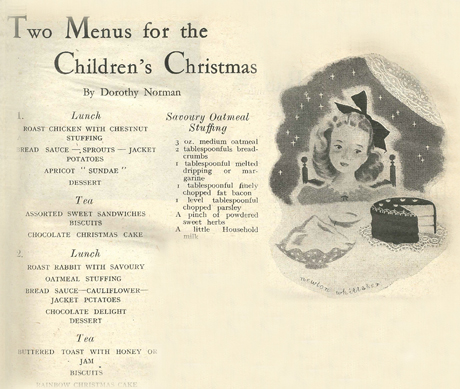
Children's Christmas menu 1942
Back nine years, to 12 December 1946, we see the capital’s recovery from war, and how visible old-fashioned austerity used to be: ‘If you have been shopping already you will have noticed that there are more Christmassy things in the shops this year than there have been for many a long day. More toys, for one thing, more Christmas cards and calendars, more pretty wrapping paper, too, and tinsel string to tie up parcels with. In Oxford Street, where last year there was perhaps one man selling air balloons, this year there are a dozen, and the fruit sellers add to the general brightness with barrows loaded with tangerines, walnuts and purple grapes, a tangerine or two usually placed among the grapes to show up their colour. Prices are high, of course, but it is a pleasure to see some brightness again after so many years of austerity.’

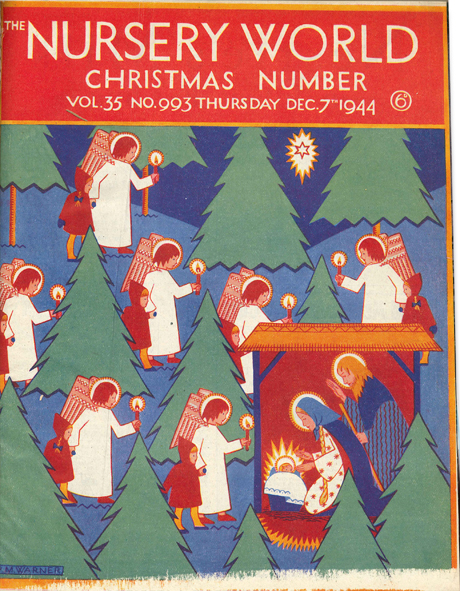
1944
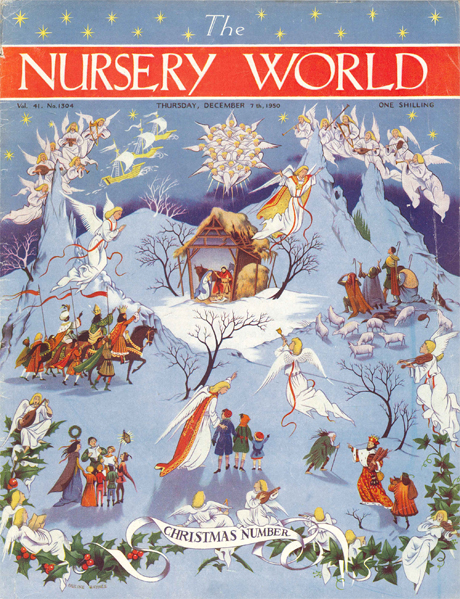 1950
1950
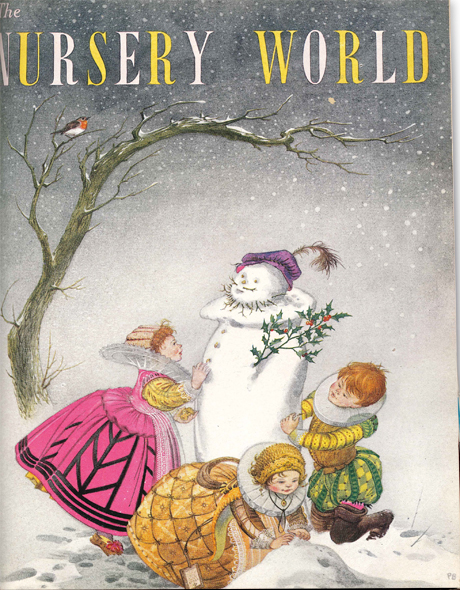
1956
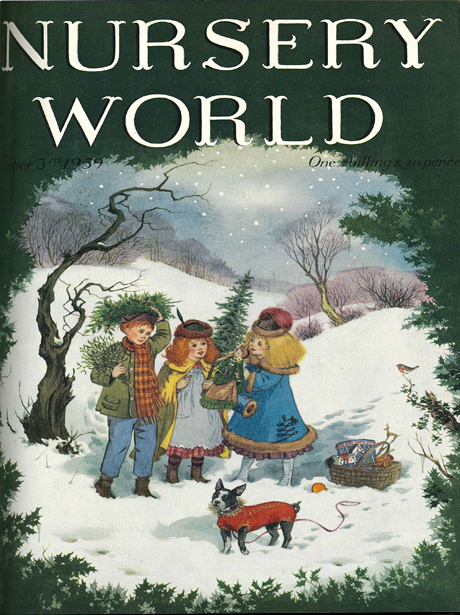 1959
1959









